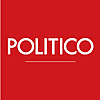ARTICLE AD BOX
In a tiny village along the Peruvian Amazon, women line up on a warm, rainy August morning to protect themselves against cervical cancer, a disease that claims the lives of six women in Peru every day.
News had spread throughout nearby villages of a pilot screening project for human papillomavirus (HPV), a common virus responsible for most cases of cervical cancer. Midwives were arriving in Comunidad El Salvador to show women how to collect their own vaginal samples. The women in line would be joining more than 100,000 others in getting tested as part of the wider screening program, involving Peru’s Ministry of Health, government organizations, patient advocates and other groups including Roche.[1]
While it is well understood that HPV screening is vital to preventing cervical cancer, the lack of access in many remote or low-income parts of the world still leaves many women at a level of risk that should be unacceptable in the modern age.
 Joanna Sickler, vice president and head of health policy and external affairs, Roche Diagnostics | via Roche
Joanna Sickler, vice president and head of health policy and external affairs, Roche Diagnostics | via RocheAs we reflect on Universal Health Coverage Day 2023, it is stories like these that serve as a stark reminder that while progress is possible, the road ahead is a long one.
As things stand, by 2030, the world will not have achieved Universal Health Coverage (UHC), the U.N.’s objective for all people to have access to comprehensive, quality health services, without facing financial hardship. Some progress has been made, particularly in the area of infectious diseases, but the headline is that since 2015, most countries have experienced worsening or no significant change in health service coverage.[2] For noncommunicable diseases — responsible for 74 percent of all deaths globally each year[3] — there has been little to no improvement in service coverage over more than 20 years.[4]
This failure to make progress has real consequences for people’s health, our societies and economies.
The 2023 UHC Global Monitoring Report confirmed more than half of the world’s population is still not covered by essential health services and that 2 billion people face severe financial hardship when paying out-of-pocket for the services and products they need.[4]
 Tamara Schudel, vice president and head of global policy, Roche Pharmaceuticals | via Roche
Tamara Schudel, vice president and head of global policy, Roche Pharmaceuticals | via RocheWe know what has to change.
The Political Declaration on UHC from the 78th United Nations General Assembly (UNGA78) has set out a series of bold steps towards more equitable health care around the world. Achieving UHC is a complex undertaking, but we are convinced that there are some key areas where we collectively accelerate impact.
The question is: what does the path towards UHC look like in practice?
Widening access through sustainable financing
Through the UNGA78 Political Declaration on UHC, global health leaders made a bold commitment to ensure 523 million more people gain access to essential health services in the next two years.[5] There is no denying that achieving this goal will take investment: many countries still miss the mark on directing a suggested minimum of 5 percent of GDP towards health. [6, 7]
However, with an estimated 20-40 percent of global health spending used inefficiently, countries also need to be getting more health for their money.[8] It is critical that future investments are targeted in a way that gives them the best chance of delivering for people and society — working to widen access to timely and affordable care.
Rwanda’s Community Based Health Insurance scheme is an example of how sustainable financial models can work in practice.[9] By organizing common community funds, where members make income-based contributions for a comprehensive range of benefits, the country has been able to increase healthcare utilization and financial protection — particularly among the poorer segments of its population.
Prioritizing funding for noncommunicable diseases
One area where investment — and progress towards UHC — is clearly needed is for noncommunicable diseases (NCDs). While NCDs account for nearly two-thirds of the world’s deaths, they only receive 1.8 percent of donor and development health funding.[10]
Increasing funding for NCDs in this way should not be thought of as a cost. Instead, it is an investment that pays dividends for societies in the long run.
Disease-centered approaches for managing infectious diseases like HIV and tuberculosis have made significant progress over the past two decades. However, as we look to the future, we need to evolve these approaches by orienting them around a wider goal: enabling people to lead healthy and productive lives — not just addressing one disease burden. For example, HIV positive women are six times more likely to develop cervical cancer.[11] Therefore, as we make progress toward HIV care, it is equally important to ensure HIV positive women are screened to prevent cervical cancer.
Increasing funding for NCDs in this way should not be thought of as a cost. Instead, it is an investment that pays dividends for societies in the long run. Global research indicates that every dollar invested in known health improvements results in a two-to-four-dollar return.[12] Tackling the area of disease that claims the most lives and where service coverage is lacking around the world is the kind of investment that yields this return.
Enabling primary health care with strong laboratories
Strong laboratory networks are a cornerstone of UHC. These future NCD-focused investments should prioritize early diagnosis and timely treatment. This doesn’t just typically result in better health outcomes for people, it is also more cost effective than acute care.
As part of its drive towards UHC, the UNGA78 Political Declaration calls for health systems to be oriented around a primary health care approach.
By meeting people’s health needs as early as possible — from health promotion to prevention to treatment — and keeping care close to their everyday environment, primary health care can help low- to middle-income countries save an estimated 60 million lives (equivalent to the population of Italy) by 2030.[13]
The WHO estimates that up to 90 percent of UHC interventions can be delivered via this primary health care approach.[13]
Primary health care’s focus on timeliness — screening, early diagnosis, and access to standard of care treatment — is critical. The COVID-19 pandemic underscored the vital role that timely detection, enabled by diagnostic tests, can play in protecting population health. The same logic applies for NCDs.
The bottom line is that UHC is not attainable without a network of laboratories and a skilled workforce to support patient diagnosis, early interventions and continued disease monitoring.
Bridging the global access gap to diagnostics is critical to make primary health care effective and enable early intervention for NCDs. This requires investment in integrated laboratory infrastructure, counting on high-volume labs and strategic deployment of point-of-care. In the remote village in Peru, for example, women could stay in their village while samples were transported to this type of lab, giving them access to the global standard of care. This is the kind of fit-for-purpose innovation we need to widen access to high-quality health care.
The bottom line is that UHC is not attainable without a network of laboratories and a skilled workforce to support patient diagnosis, early interventions and continued disease monitoring. Support for labs must be a part of national UHC plans.
Working together for better health
Arriving at the UNGA78 Political Declaration took political leadership, but putting UHC into practice will take even more.
Providing the population of any country with affordable access to quality health services is not easy, but it’s almost impossible when working alone. Multistakeholder partnerships — counting on governments, private companies, civil society representatives and patients — offer opportunities to pool resources, amplify an individual organization’s impact and realize a wide range of UHC initiatives, from sustainable financing to early screening programs to expanding access to diagnostics and therapies.[14]
As a global health care company, we at Roche recognize our responsibility to engage in this collective effort. We remain committed to supporting access to our medicines and diagnostics for people who need them.
As Italy and Brazil carry the torch for UHC at the 2024 G7 and G20 summits, maintaining the world’s focus on NCD funding and early interventions, from screening to diagnosis and treatment, is priority number one. That is how we drive the best outcomes for patients, the best use of resources for health care systems, and ultimately, progress toward UHC.
Just as women in Peru’s most remote villages wait in line for cervical cancer screening, 4.5 billion people around the world are still in need of better access to health care.[4]
Let’s not keep them waiting too long.
References
[1] Saving lives through cervical cancer prevention. Roche. [https://www.roche.com/stories/cervical-cancer-prevention-partnerships”] (Accessed 30.11.2023)
[2] Universal health coverage (UHC). World Health Organization. Available at: https://www.who.int/news-room/fact-sheets/detail/universal-health-coverage-(uhc) (Accessed 25.10.2023)
[3] Noncommunicable diseases. World Health Organization. Available at: https://www.who.int/news-room/fact-sheets/detail/noncommunicable-diseases (Accessed 25.10.2023)
[4] Billions left behind on the path to universal health coverage. World Health Organization. Available at: https://www.who.int/news/item/18-09-2023-billions-left-behind-on-the-path-to-universal-health-coverage (Accessed 25.10.2023)
[5] UN Political Declaration on Universal Health Coverage: Ambitious Aspirations Against Litany of Failures. Health Policy Watch. Ruth Fletcher, E. Available at: https://healthpolicy-watch.news/un-political-declaration-on-universal-health-coverage-ambitious-reach-against-autopsy-of-failures-to-date/ (Accessed 25.10.2023)
[6] Africa Scorecard on Domestic Financing for Health. African Union and The Global Fund. Available at: https://au.int/sites/default/files/newsevents/workingdocuments/34086-wd-au_scorecard_-_final_english.pdf (Accessed 25.10.2023)
[7] What level of domestic government health expenditure should we aspire to for universal health coverage?. Mcintyre, D., Meheus, F., and Røttingen, J-A. Health Econ Policy Law. Volume 12, issue 2, pages 125-137.
[8] Sustainable financing for health. World Health Organization. Available at: https://www.who.int/initiatives/sdg3-global-action-plan/accelerator-discussion-frames/sustainable-financing-for-health (Accessed 25.10.2023)
[9] CBHI Scheme. Rwanda Social Security Board. Available at: https://www.rssb.rw/scheme/cbhi-scheme (Accessed 25.10.2023)
[10] An analysis of policy and funding priorities of global actors regarding noncommunicable disease in low- and middle-income countries. Jailobaeva K., et al. Globalization and Health. Volume 17, article number 68.
[11] Cervical cancer. World Health Organization. Available at: https://www.who.int/news-room/fact-sheets/detail/cervical-cancer (Accessed 28.11.2023)
[12] Invest $1 in known health improvements, get up to $4 back in GDP. McKinsey & Company. Available at: https://www.mckinsey.com/featured-insights/sustainable-inclusive-growth/chart-of-the-day/invest-1-in-known-health-improvements-get-up-to-4-back-in-gdp (Accessed 25.10.2023)
[13] Primary health care. World Health Organization. Available at: https://www.who.int/news-room/fact-sheets/detail/primary-health-care (Accessed 25.10.2023) [14] Roche engages with UHC2030, the official multistakeholder platform, including members like the World Health Organization, the Organization for Economic Co-operation and Development, and the World Bank, to advocate for UHC implementation. More details at https://www.uhc2030.org/
.png)
 1 year ago
10
1 year ago
10








 English (US)
English (US)